Affiliate links on Android Authority may earn us a commission. Learn more.
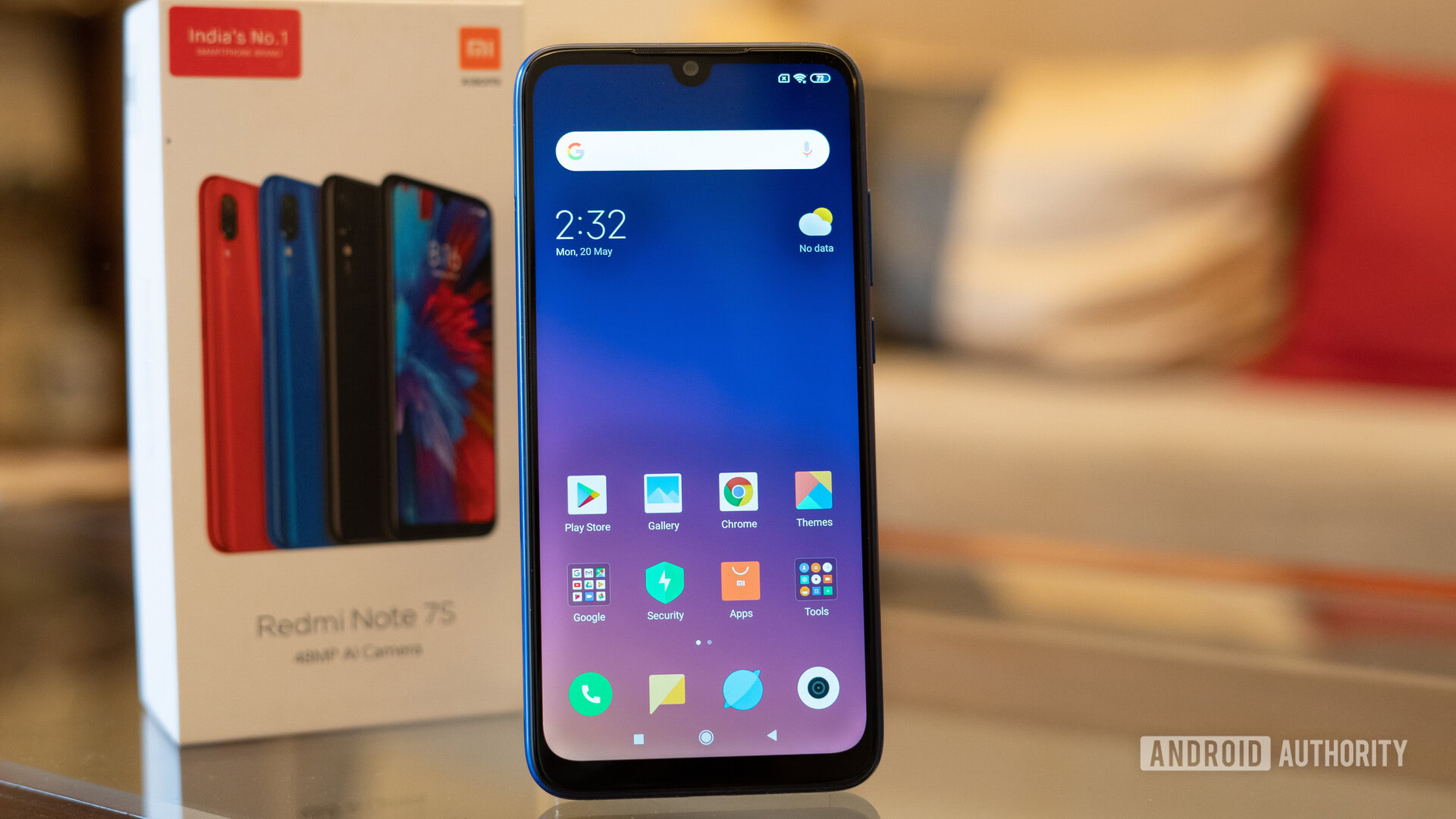
Redmi Note 7S review: The budget photography champ
Published onJune 10, 2019
Redmi Note 7S
What we like
What we don't like
Our scores
Redmi Note 7S
While the Redmi Note series has always packed a one-two punch in the form of an entry-level device and a more powerful “pro” model, Xiaomi offshoot Redmi is taking a slightly different approach this year. Enter the Redmi Note 7S, following up on the very popular Redmi Note 7 and Note 7 Pro. This three-pronged strategy to dominate the entry-level segment at every 1,000 rupee (~$15) step is aggressive and some would say, unnecessary.
As the likes of Realme start taking bites at Xiaomi’s market share, is flooding the market with step improvements the right approach? We try and found out in Android Authority’s Xiaomi Redmi Note 7S review.
Don’t miss:
About this review
This Redmi Note 7S review was written after a week of use on Airtel’s network in New Delhi, India. The phone was running Android Pie with the May 5, 2019 security patch installed. The Redmi Note 7S was running MIUI 10.3.5 Stable out of the box.
Redmi Note 7S: The big picture
The Redmi Note 7 and the Note 7 Pro are incredibly popular device and have collectively sold over 10 million units around the world. In India alone, the two phones have sold over two million units.
To give those numbers a boost, Xiaomi recently launched the Redmi Note 7S. The phone adds a third model to an already packed line-up and is poised to confuse potential buyers.
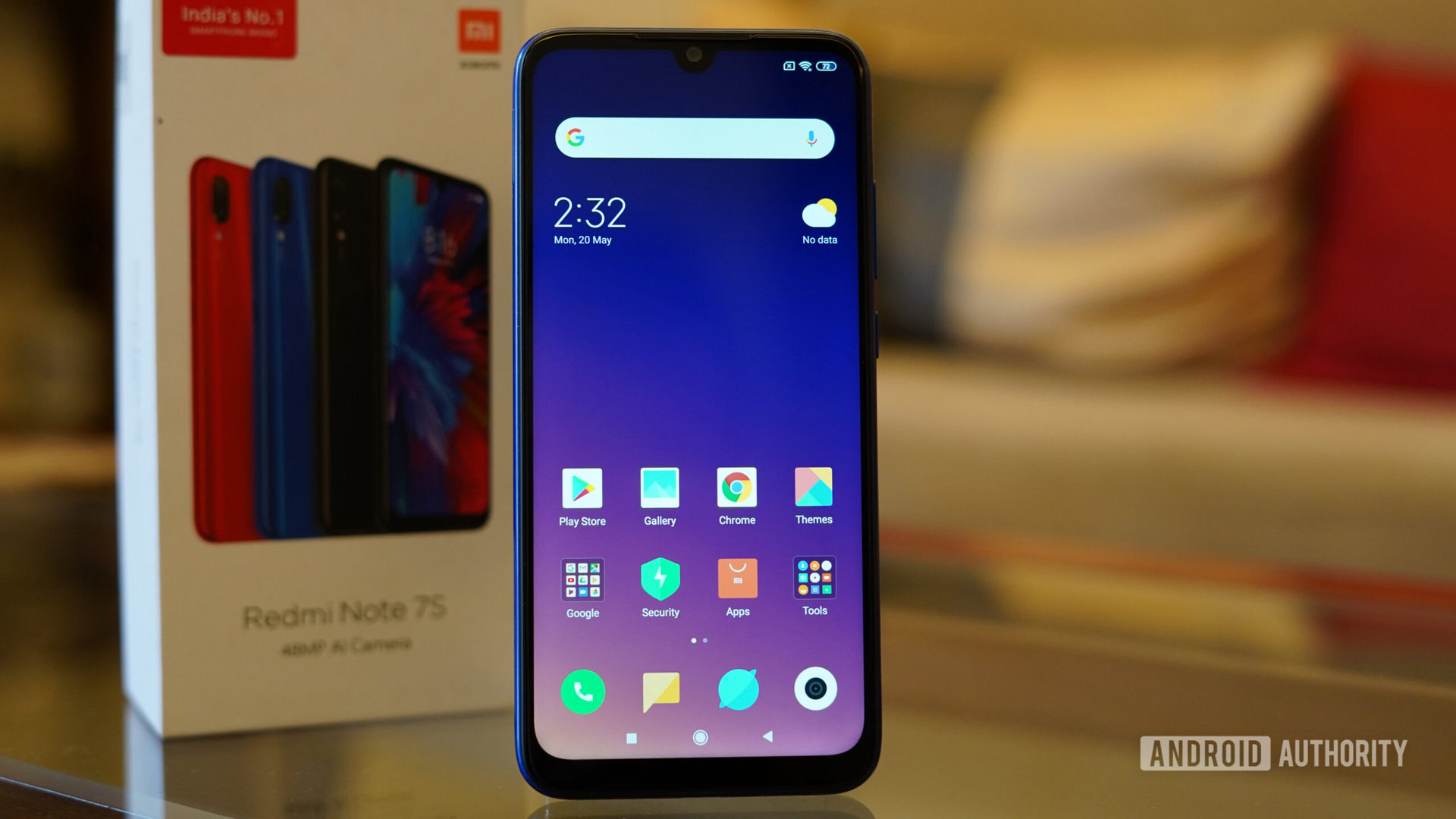
The Redmi Note 7S sits at an odd place where it has the exact same performance as the entry-level Redmi Note 7 and sports a camera that is somewhere in-between the Note 7 and the Note 7 Pro. Honestly, Xiaomi should just nix the entry-level model altogether since the Redmi Note 7S is a noticeably better device at a not-so-higher price point. More on that later on.
What’s in the box
- Wall charger
- USB-Type C cable
- Soft case
- SIM ejector tool
- User guide
- Warranty papers
The Redmi Note 7S ships with a pretty standard package. Most essentials, including a case are included but a pre-applied screen protector would have been a nice touch.
Design
- 159.2 x 75.2 x 8.1mm
- Glass and metal
- Waterdrop notch
- USB-C port
- Headphone jack
- Fingerprint scanner
Xiaomi has a homogeneous design language across the entirety of the Redmi Note series. Starting from the base model to the Redmi Note 7 Pro and now the “mid-range” 7S, the three phones look almost entirely the same. This is the same glass-and-metal sandwich you get on the other two devices, right down to the Gorilla Glass 5 on the front and the back.
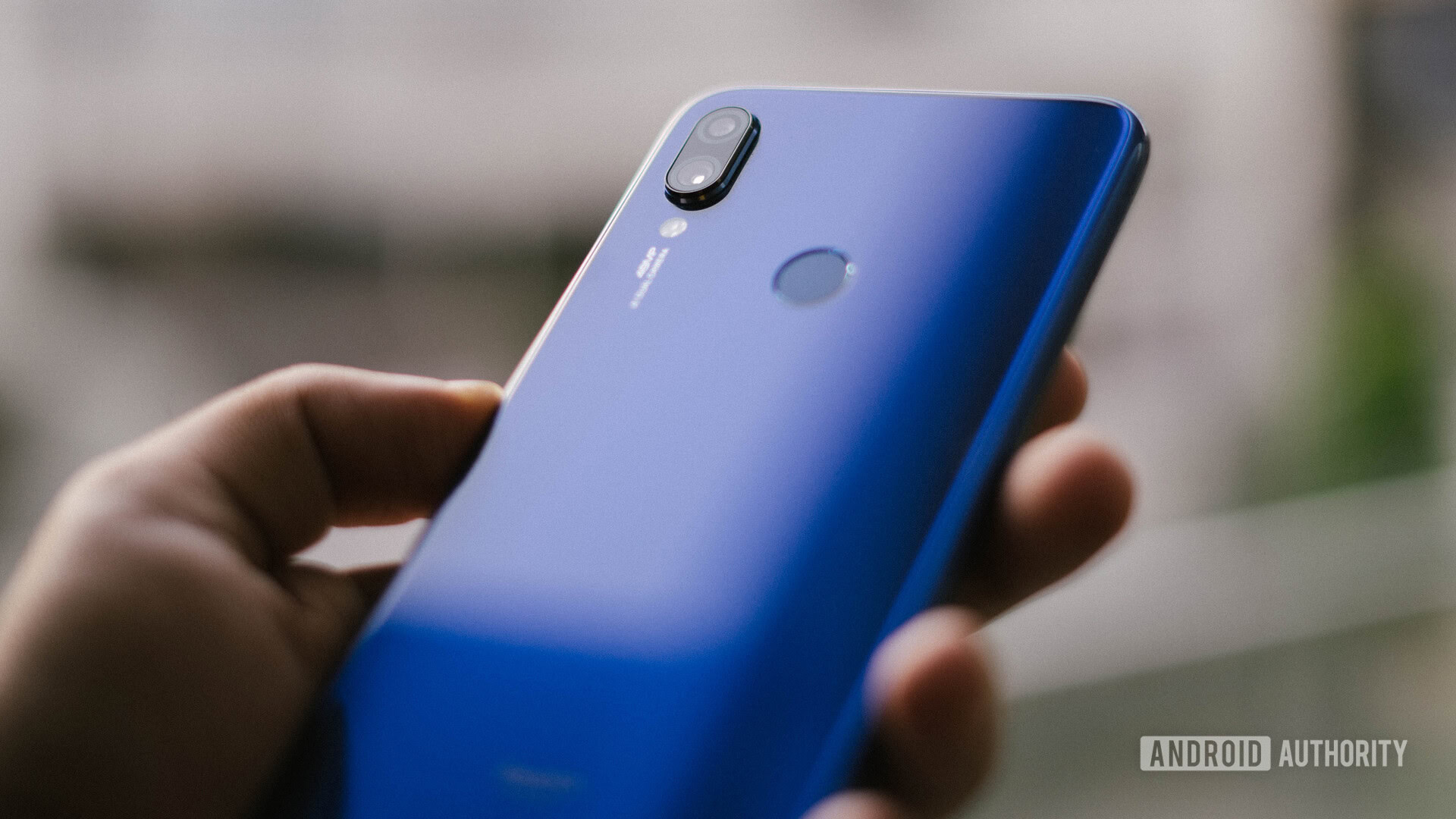
Redmi has nailed down the art of building a phone and things like ergonomics and hand-feel are borderline perfect. The Redmi 7S fits great in the hand and feels great to use; the power button and volume rocker fall exactly where you would expect them to. There are no wobbles and the buttons have just enough give. Meanwhile, along the bottom edge lies a USB-C charging port.
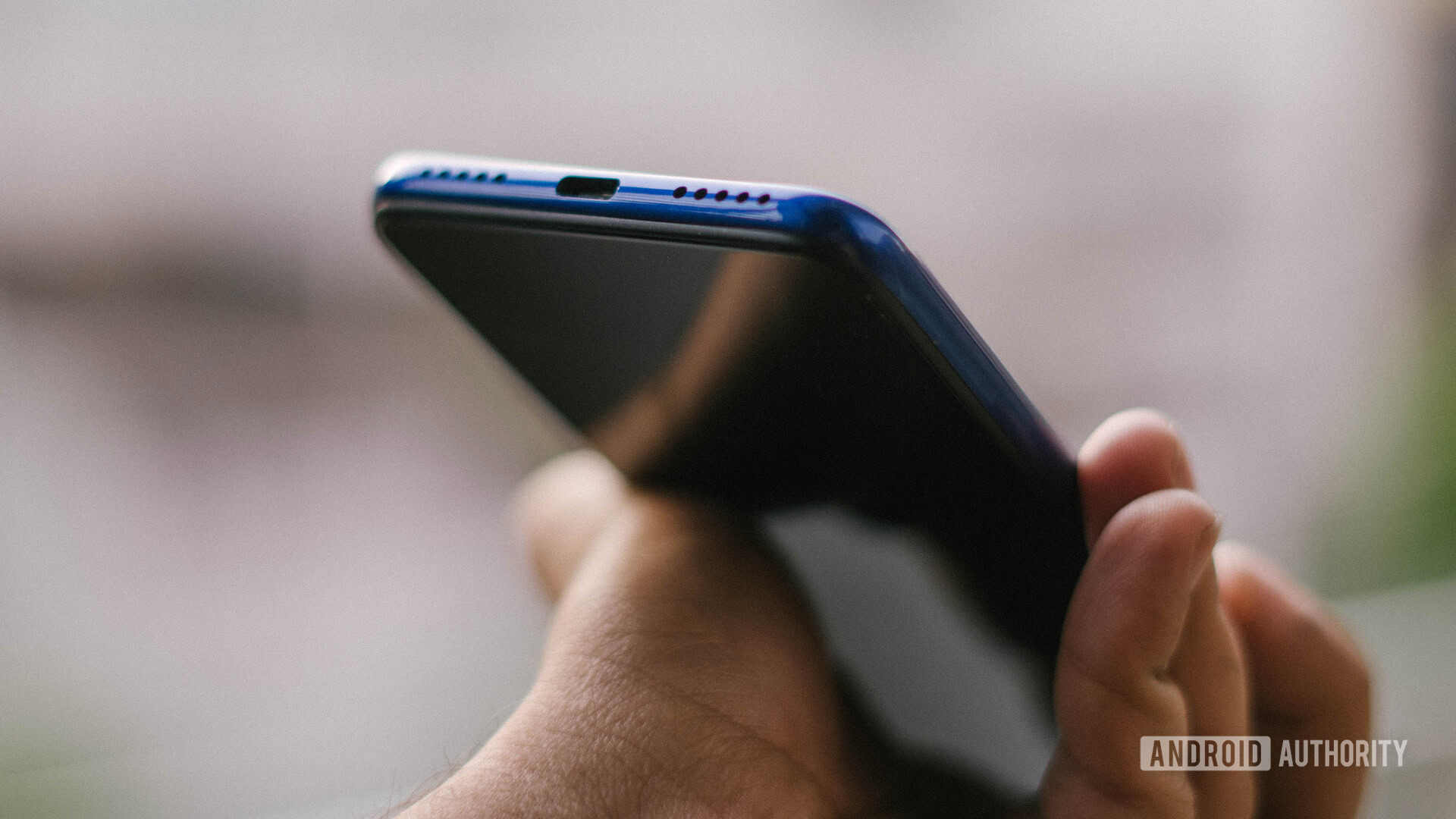
Part of Xiaomi’s refreshed design language, the Redmi Note 7S has a glass back with a dual camera set up placed at the top left corner. You’ll also find a centered fingerprint reader. All these are standard features and they all work just as you would expect.
Display
- 6.3-inches
- Full HD+
- Gorilla Glass 5
- Widevine L1 Support
The similarities between the three models continue on to the display and the Redmi Note 7S has the exact same panel that you find on the Redmi Note 7 and the Redmi Note 7 Pro.
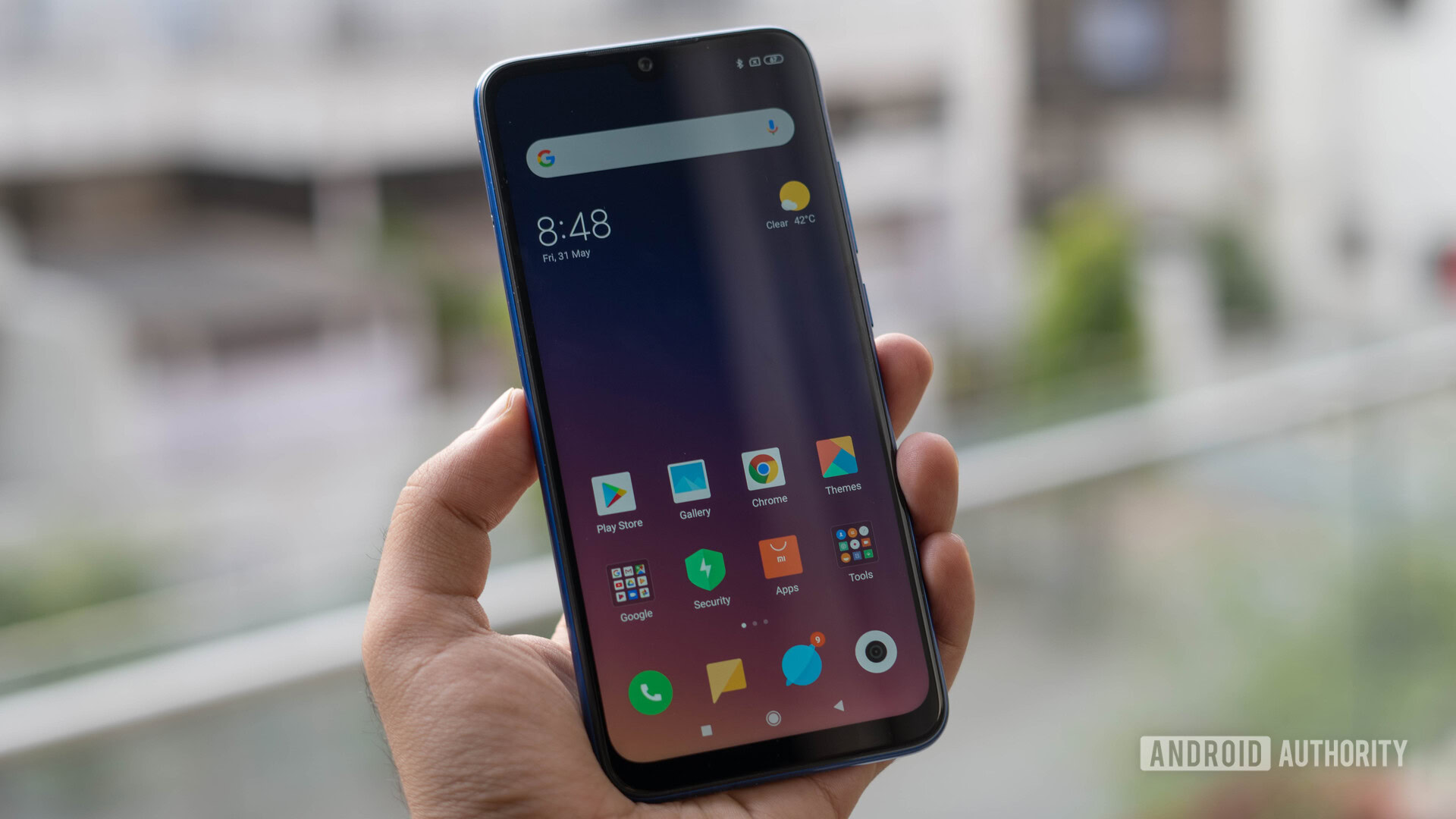
Measuring 6.3-inches, the screen looks plenty good. The colors are vibrant and multimedia content looks great on the phone. Black levels aren’t too good and that’s one area where the Super AMOLED panel on the Samsung Galaxy A20 definitely pulls ahead. But what you lose in inky-deep blacks, you make up in resolution — the Redmi sports a Full HD+ panel, compared to the HD+ panel on the Samsung.
Between the waterdrop notch, Widevine L1 compatibility, and a generally great-looking screen, the Redmi Note 7S is about as good as it gets in this segment of devices.
Performance
- 2.2GHz Snapdragon 660
- Adreno 512
- 3/4GB RAM
- 32/64GB Storage + microSD
The Snapdragon 660 chipset used on the Redmi Note 7S is by no means fresh, but that doesn’t mean it lacks the oomph to power your day-to-day user experience. Performance is, for lack of better words, just fine. It’ll run all your apps at a speedy clip and most games should run fine too.
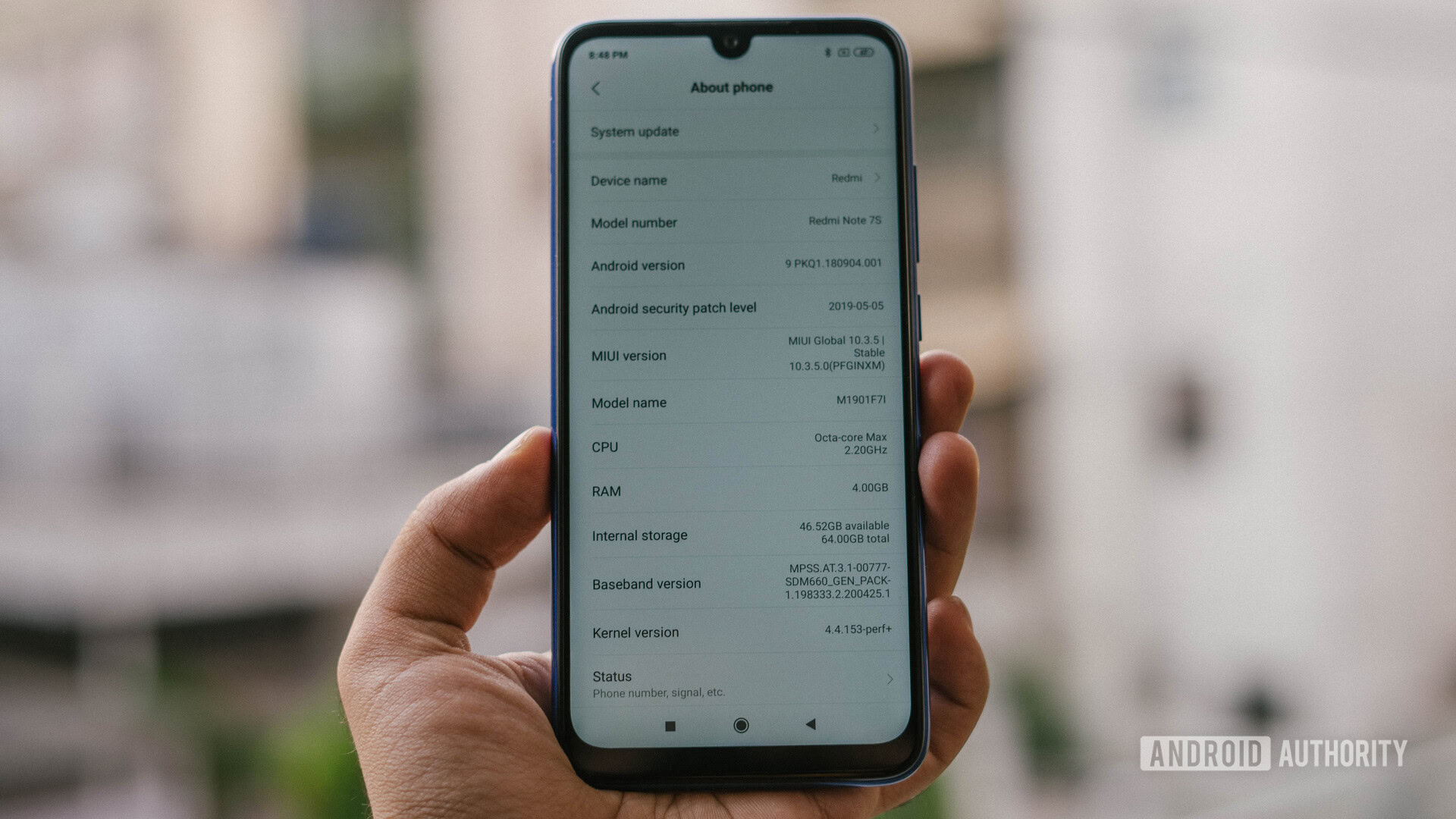
In my week with the phone, I observed there is an extra layer of polish to the software-hardware integration on the Redmi Note 7S. The glitches and hard reboots that I often bumped into with the Redmi Note 7 Pro are not a concern on the Redmi Note 7S. While it lacks the raw power of the Note 7 Pro’s Snapdragon 675, Redmi Note 7S is generally fast enough for anything you throw at it.
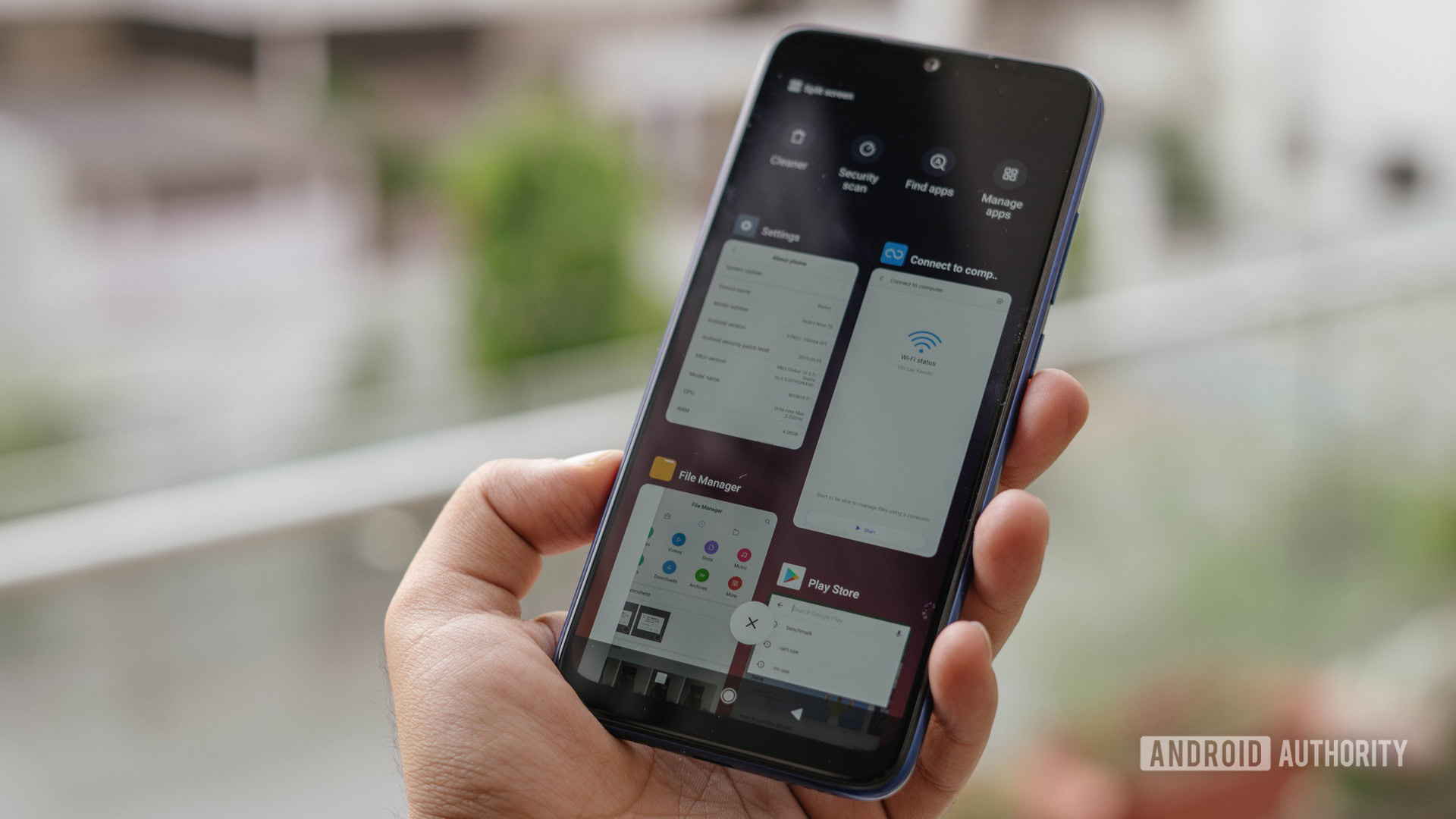
If you’re considering buying the Redmi Note 7S, you should definitely look up the higher-end variant with 4GB of RAM. Memory management on the phone can be a bit aggressive but it is possible to lock apps to ensure that they are not force closed. 3GB on the entry level model is just too little with the added load of MIUI.
Benchmark performance on the phone matched up what we expected from the hardware.
Battery
- 4,000 mAh
- Quick Charge 4 support
Battery life on Xiaomi’s hardware has always been exemplary. Between the large 4,000mAh capacity and the company’s hardware and software optimizations, the Redmi Note 7S lasts a day of use with ease. I consistently observed close to seven hours of screen-on-time.
The 4,000mAh battery lasts a full day but there is no Quick Charge 4.0 adapter in the box.
Your mileage will vary depending on your use case. In my week with the phone, with a mixed use scenario involving social media use, streaming over Spotify, and a whole lot of emails, I never ran out of charge during a regular day of use. The phone supports fast-charging over the Quick Charge 4.0 standard, but a compatible charger is not included in the box. Using the in-box charger, the Redmi Note 7S tops off from 0 to 100 in about 140 minutes.
Software
- MIUI 10.3.5
- Android Pie
You know the drill. The Redmi Note 7S runs Xiaomi’s homegrown MIUI skin. Whether you like it or not is a matter of preference but it has a number of glaring issues that are now all the more relevant given the tough competition the company faces.
Let’s start with the positives. I don’t really mind how the interface looks. Sure, it looks very heavily inspired by iOS in its lack of an app drawer and certain iconography, but I’m willing to overlook it for the feature set. My daily driver is a Pixel 3 with stock Android and I can definitely appreciate the merits of having a whole host of essential apps baked right into the operating system.
What I do not like is the sheer number of permissions some of these app require. There is no reason why a weather app should need phone call permissions. Then there is the entire ad situation. Yes, I know it is possible to disable advertisements but the average person buying a phone should not have to read a manual to stop their phone from becoming a billboard.
The ads issue, so far, concerns only the Indian market, but with the likes of realme bringing the competition to their doorstep, sans ads, it is high time Redmi addresses this.
Camera
- 48MP
- Samsung GM1 sensor
- Full HD video recording
The high resolution camera is what you’re buying into with the Redmi Note 7S. Unlike the Redmi Note 7 Pro, the 7S does not have a Sony IMX586 sensor. Instead, users get a 48MP Samsung GM1 sensor. Is this a significant downgrade? We took the Redmi Note 7S out for a spin to check out its camera capabilities.
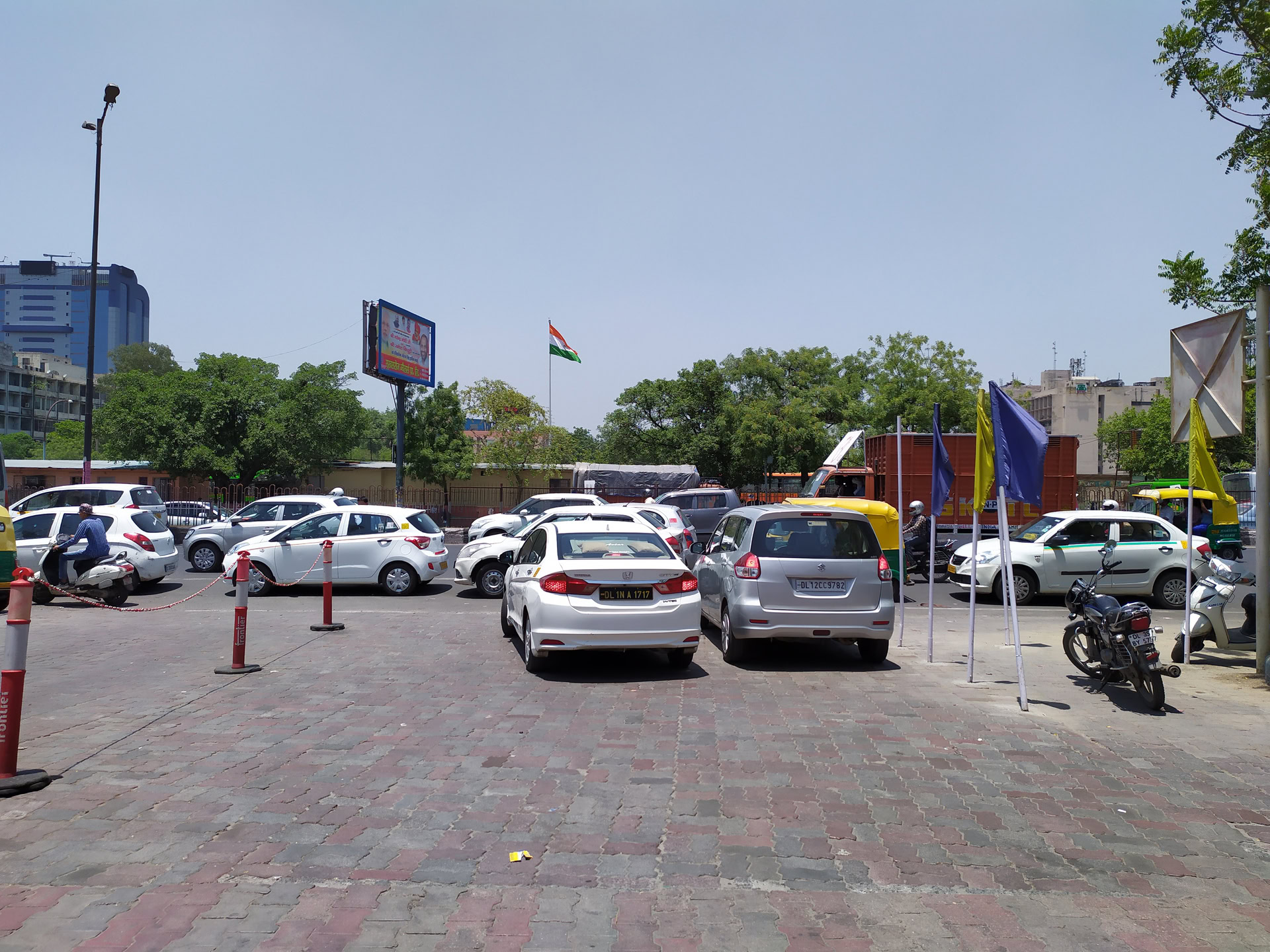
It is hard to get a shot wrong outdoors in bright daylight. This is a setting that almost no phone messes up and that continues to be the case with the Redmi Note 7S. The highlights are mostly in check, though the brighter whites are just ever so slightly blown out at a few spots. Given how bright it was, I doubt many phones would do better than this.

Indoors, in decent ambient lighting, the Redmi Note 7S manages to shoot good-looking images with a trace amount of softness. It appears that the Xiaomi’s processing prioritizes making the entire image look brighter over low level detail.
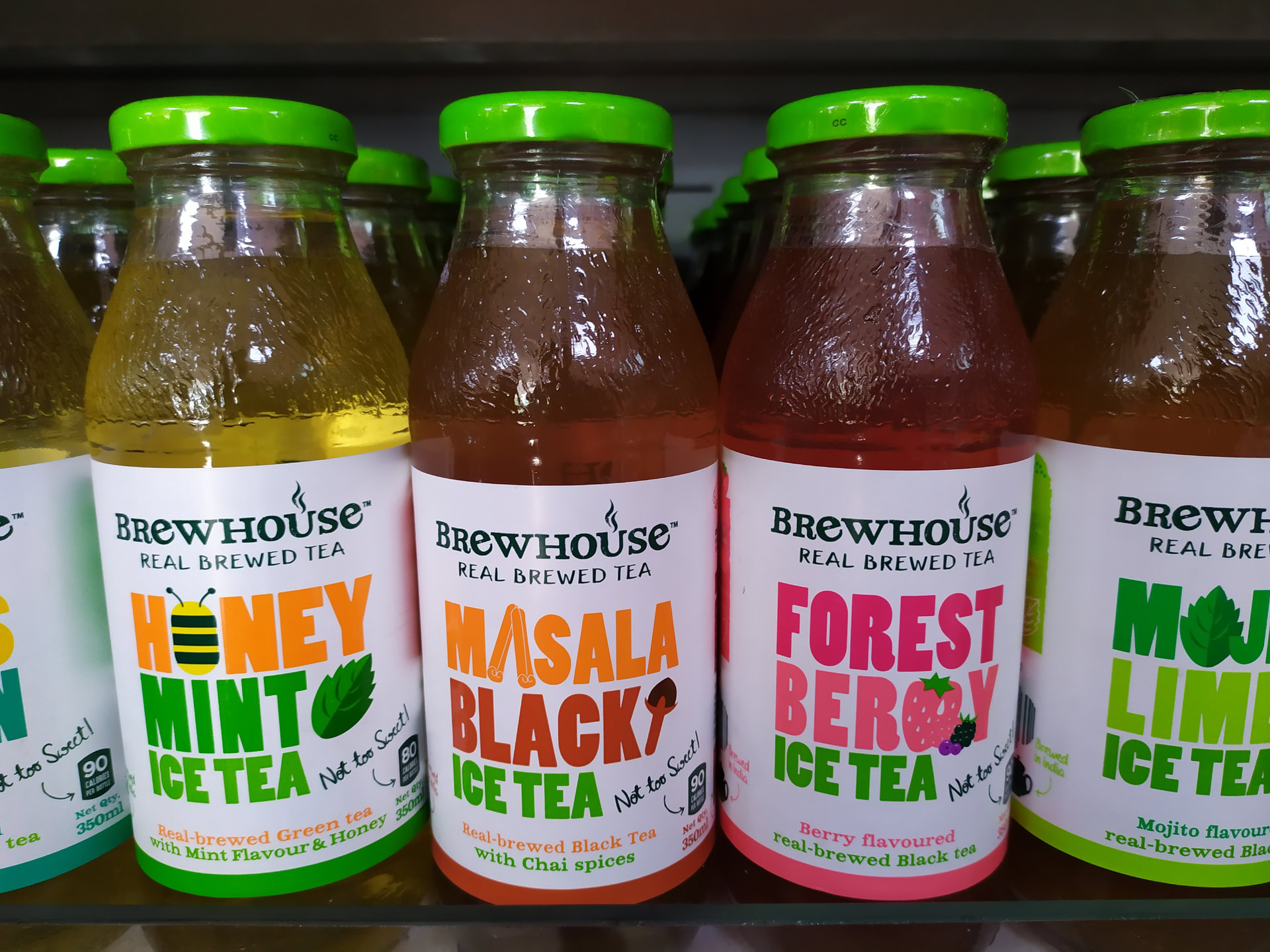
Color rendition is great and images look vibrant and punchy. The colors aren’t entirely natural, but the slightly boosted tones make images look more visually appealing.
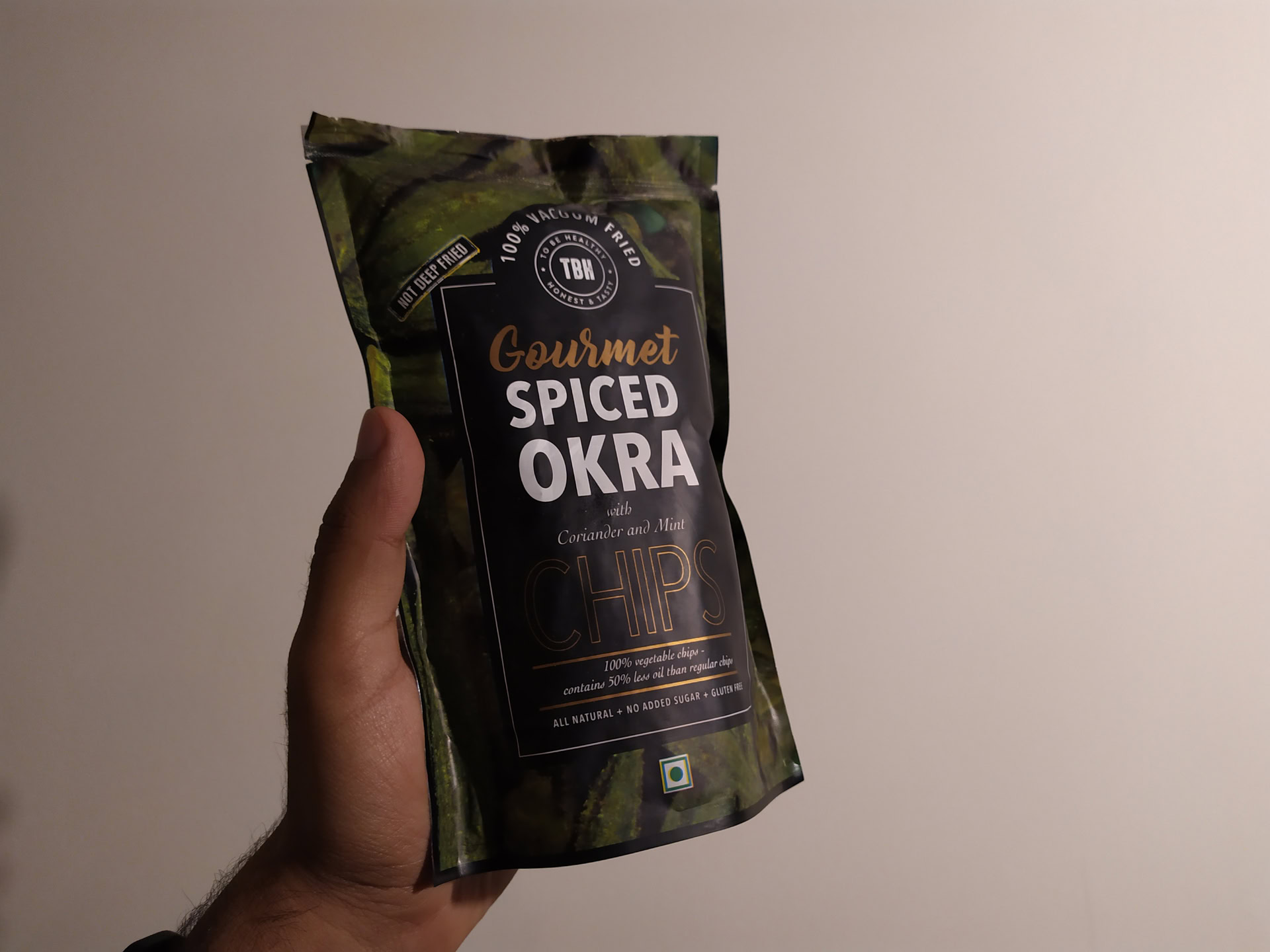
In poor lighting conditions, the results the Redmi Note 7S captured were much better than I expected. The phone managed to keep overall noise levels in check with the tradeoff being lesser low-level detail. It isn’t ideal but most users should be happy with this approach, since it presents a more visually appealing and shareable image.
The 7S has a built-in night-mode that can further improve low-light sensitivity. The results speak for themselves and while noise-levels do go up, this is a fairly usable shot in a pinch.
Video recording on the phone tops off at Full HD 60fps and supports electronic image stabilization. Video footage looks quite crisp and rather good, as long as there is decent ambient light. Similarly, the phone’s 13MP front camera manages good-looking shots as long as lighting conditions are favorable.
Redmi Note 7S specifications
| Redmi Note 7S | |
|---|---|
Display | 6.3-inch IPS LCD 1080 x 2340 resolution 19.5:9 aspect ratio Corning Gorilla Glass 5 Dot Notch |
SoC | Qualcomm Snapdragon 660 (14 nm) Octa-core CPU (4 x 2.2 GHz Kryo 260 + 4 x 1.8 GHz Kryo 260) |
GPU | Adreno 512 |
RAM | 3GB/4GB |
Storage | 32GB/64GB Expandable with microSD card |
Cameras | 13MP front camera Rear camera: 48MP + 5MP dual rear camera with PDAF, EIS and AI Portrait Mode LED flash |
Battery | 4,000mAh Quick Charge 4.0 support 18W (9V/2A) |
Software | Android 9.0 Pie with MIUI 10 |
Miscellaneous | P2i Coating IR Blaster |
Dimensions and weight | 159.2 x 75.2 x 8.1 mm |
Value for money
The Redmi Note 7S is priced between 10,999 and 12,999 rupees (~$157 to ~$186) for the 3/32GB and 4/64GB models. Meanwhile, the Redmi Note 7 with a lower resolution camera sensor is priced at 9,999 and 11,999 rupees (~$143 to ~$172) for similar storage options. Finally, the Redmi Note 7 Pro that is priced at 13,999 and 16,999 rupees (~$200 to ~$244) for the 4/64GB and 6/128GB variants.
The Redmi Note 7S, especially the 4/64GB variant, offers fantastic bang-for-the-buck.
The price difference between the three phones may not be substantial, but every penny, or in this case rupee, matters when you are on a budget. The Redmi Note 7S, especially the 4/64GB variant, offers fantastic bang-for-the-buck with its price to performance ratio.
Redmi Note 7S: The verdict
The Redmi Note 7S is in a position where it makes the regular Redmi Note 7 almost redundant. Between the better camera and overall refinement, the Redmi Note 7S comes across as easy to recommend.
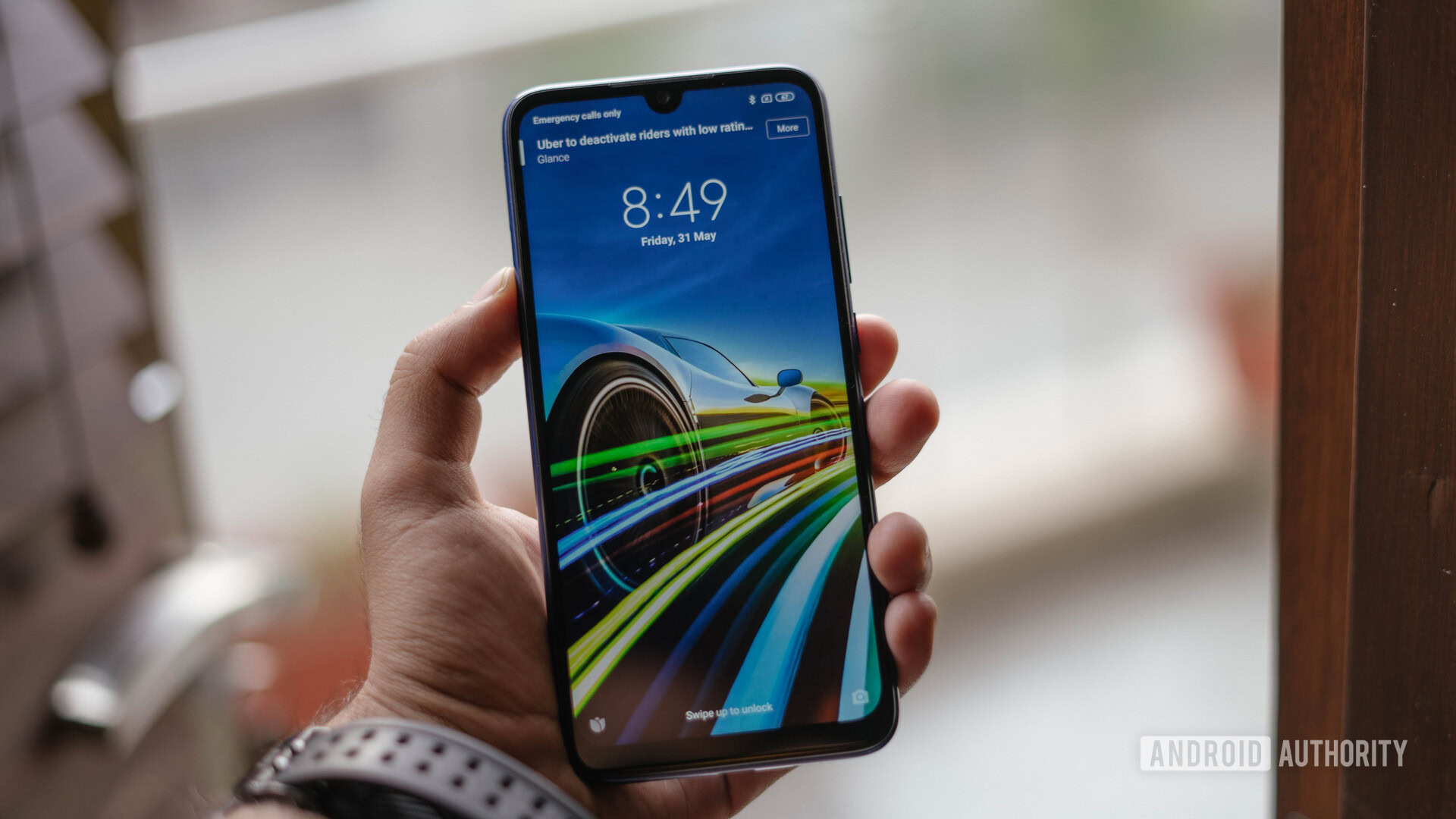
The Redmi Note 7S isn’t the only great option in the entry level segment. Realme and Asus both have great smartphones in the segment, but none can offer a camera with such capabilities. It helps that the Redmi Note 7S is powerful enough for most. If photography is a priority, the Redmi Note 7S would be a great choice, but I would recommend stepping up to the slightly more expensive Redmi Note 7 Pro for a truly fantastic imaging experience in the sub-15,000 rupees (~$215) category of devices.
What do you think of our Redmi Note 7S review? Let us know in the comments.